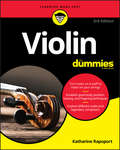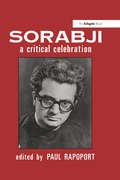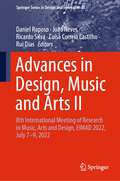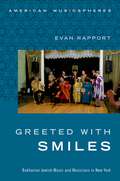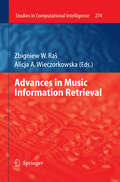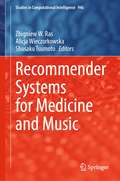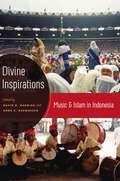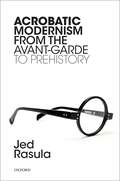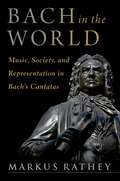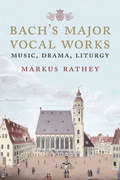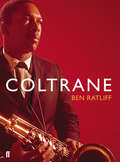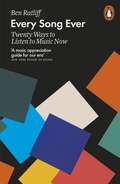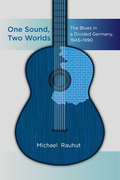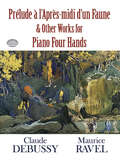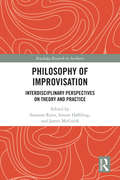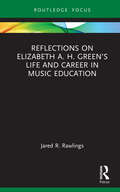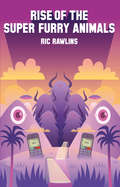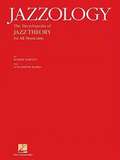- Table View
- List View
Violin For Dummies: Book + Online Video and Audio Instruction
by Katharine RapoportTurn notes on a staff to notes on your strings Establish good body position, bowing, and fingering techniques Explore different styles and legendary composers Draw beautiful sounds from your violin! While learning the violin is a formidable goal, you don't have to be a music genius to grasp the basics. And with practice, the payoff will be music to your ears—plus a world of musical opportunity. This book starts you on the path to mastering the instrument that is central to musical cultures throughout the world. Playing along with the lessons in this friendly step-by-step guide will take you from first notes to performing entire songs—and you'll be glad you added this string to your bow! Inside... Choose your instrument Hold your violin correctly Play scales and chords Understand notation Master different music styles Tune and care for your instrument Find practice files online
Sorabji: A Critical Celebration
by Paul RapoportKaikhosru Shapurji Sorabji (1892-1988) was an unusual legend in his own lifetime: a Parsi composer and critic living in England whose compositions are of such length and difficulty that he felt compelled to ban public performances of them. This book, the first devoted to Sorabji, explores his life and character, his music, his articles and letters. It both presents the legend accurately and dispels its exaggerated aspects. The portrait which emerges is not of a crank or eccentric but of a highly original and accomplished musical thinker whom recent performances and recordings confirm as unique and important. Most of the contributors knew Sorabji personally. They have all written about or performed his music, gaining international recognition for their work. Generous quotation of Sorabji's published and unpublished music and prose assists in bringing him and his work strikingly to life. The book also contains the most complete and accurate register of his work ever published.
Sorabji: A Critical Celebration
by Paul Rapoport Alistair Hinton Frank Holliday Kenneth Derus Nazlin Bhimani Michael Habermann Geoffrey Douglas Madge Marc-André RobergeKaikhosru Shapurji Sorabji (1892-1988) was an unusual legend in his own lifetime: a Parsi composer and critic living in England whose compositions are of such length and difficulty that he felt compelled to ban public performances of them. This book, the first devoted to Sorabji, explores his life and character, his music, his articles and letters. It both presents the legend accurately and dispels its exaggerated aspects. The portrait which emerges is not of a crank or eccentric but of a highly original and accomplished musical thinker whom recent performances and recordings confirm as unique and important. Most of the contributors knew Sorabji personally. They have all written about or performed his music, gaining international recognition for their work. Generous quotation of Sorabji's published and unpublished music and prose assists in bringing him and his work strikingly to life. The book also contains the most complete and accurate register of his work ever published.
Advances in Design, Music and Arts II: 8th International Meeting of Research in Music, Arts and Design, EIMAD 2022, July 7–9, 2022 (Springer Series in Design and Innovation #25)
by Daniel Raposo João Neves Ricardo Silva Luísa Correia Castilho Rui DiasThis book presents cutting-edge methods and findings that are expected to contribute to significant advances in the areas of communication design, fashion design, interior design and product design, as well as musicology and other related areas. It especially focuses on the role of digital technologies, and on strategies fostering creativity, collaboration, education, as well as sustainability and accessibility in the broadly-intended field of design. Gathering the proceedings of the 8th EIMAD conference, held on July 7–9, 2022, and organized by the School of Applied Arts of the Instituto Politécnico de Castelo Branco, in Portugal, this book offers a timely guide and a source of inspiration for designers of all kinds, advertisers, artists, and entrepreneurs, as well as educators and communication managers.
Greeted With Smiles: Bukharian Jewish Music and Musicians in New York (American Musicspheres)
by Evan RapportAs the Soviet Union stood on the brink of collapse, thousands of Bukharian Jews left their homes from across the predominantly Muslim cities of Central Asia, to reestablish their lives in the United States, Israel and Europe. Today, about thirty thousand Bukharian Jews reside in New York City, settled into close-knit communities and existing as a quintessential American immigrant group. For Bukharian immigrants, music is an essential part of their communal self-definition, and musicians frequently act as cultural representatives for the group as a whole. Greeted with Smiles: Bukharian Jewish Music and Musicians in New York explores the circumstances facing new American immigrants, using the music of the Bukharian Jews to gain entrance into their community and their culture. Author Evan Rapport investigates the transformation of Bukharian identity through an examination of corresponding changes in its music, focusing on three of these distinct but overlapping repertoires - maqom (classical or "heavy" music), Jewish religious music and popular party (or "light") music. Drawing upon interviews, participant observation and music lessons, Rapport interprets the personal perspectives of musicians who serve as community leaders and representatives. By adapting strategies acquired as an ethno-religious minority among Central Asian Muslim neighbors, Bukharian musicians have adjusted their musical repertoire in their new American home. The result is the creation of a distinct Bukharian Jewish American identity-their musical activities are changing the city's cultural landscape while at the same time providing for an understanding of the cultural implications of Bukharian diaspora. Greeted with Smiles is sure to be an essential text for ethnomusicologists and scholars of Jewish and Central Asian music and culture, Jewish-Muslim interaction and diasporic communities.
Greeted With Smiles: Bukharian Jewish Music and Musicians in New York (American Musicspheres)
by Evan RapportAs the Soviet Union stood on the brink of collapse, thousands of Bukharian Jews left their homes from across the predominantly Muslim cities of Central Asia, to reestablish their lives in the United States, Israel and Europe. Today, about thirty thousand Bukharian Jews reside in New York City, settled into close-knit communities and existing as a quintessential American immigrant group. For Bukharian immigrants, music is an essential part of their communal self-definition, and musicians frequently act as cultural representatives for the group as a whole. Greeted with Smiles: Bukharian Jewish Music and Musicians in New York explores the circumstances facing new American immigrants, using the music of the Bukharian Jews to gain entrance into their community and their culture. Author Evan Rapport investigates the transformation of Bukharian identity through an examination of corresponding changes in its music, focusing on three of these distinct but overlapping repertoires - maqom (classical or "heavy" music), Jewish religious music and popular party (or "light") music. Drawing upon interviews, participant observation and music lessons, Rapport interprets the personal perspectives of musicians who serve as community leaders and representatives. By adapting strategies acquired as an ethno-religious minority among Central Asian Muslim neighbors, Bukharian musicians have adjusted their musical repertoire in their new American home. The result is the creation of a distinct Bukharian Jewish American identity-their musical activities are changing the city's cultural landscape while at the same time providing for an understanding of the cultural implications of Bukharian diaspora. Greeted with Smiles is sure to be an essential text for ethnomusicologists and scholars of Jewish and Central Asian music and culture, Jewish-Muslim interaction and diasporic communities.
Advances in Music Information Retrieval (Studies in Computational Intelligence #274)
by Zbigniew W. Ras Alicja WieczorkowskaSound waves propagate through various media, and allow communication or entertainment for us, humans. Music we hear or create can be perceived in such aspects as rhythm, melody, harmony, timbre, or mood. All these elements of music can be of interest for users of music information retrieval systems. Since vast music repositories are available for everyone in everyday use (both in private collections, and in the Internet), it is desirable and becomes necessary to browse music collections by contents. Therefore, music information retrieval can be potentially of interest for every user of computers and the Internet. There is a lot of research performed in music information retrieval domain, and the outcomes, as well as trends in this research, are certainly worth popularizing. This idea motivated us to prepare the book on Advances in Music Information Retrieval. It is divided into four sections: MIR Methods and Platforms, Harmony, Music Similarity, and Content Based Identification and Retrieval. Glossary of basic terms is given at the end of the book, to familiarize readers with vocabulary referring to music information retrieval.
Recommender Systems for Medicine and Music (Studies in Computational Intelligence #946)
by Zbigniew W. Ras Alicja Wieczorkowska Shusaku TsumotoMusic recommendation systems are becoming more and more popular. The increasing amount of personal data left by users on social media contributes to more accurate inference of the user’s musical preferences and the same to quality of personalized systems. Health recommendation systems have become indispensable tools in decision making processes in the healthcare sector. Their main objective is to ensure the availability of valuable information at the right time by ensuring information quality, trustworthiness, authentication, and privacy concerns. Medical doctors deal with various kinds of diseases in which the music therapy helps to improve symptoms. Listening to music may improve heart rate, respiratory rate, and blood pressure in people with heart disease. Sound healing therapy uses aspects of music to improve physical and emotional health and well-being. The book presents a variety of approaches useful to create recommendation systems in healthcare, music, and in music therapy.
Divine Inspirations: Music and Islam in Indonesia
by Anne K. Rasmussen David D. HarnishDivine Inspirations: Music and Islam in Indonesia brings together the work of 11 international scholars into an unprecedented volume focused on religion and performance in a nation celebrated for its extraordinary arts, religious diversity, and natural beauty. The resulting collection provides a panoramic view of Indonesia's Islamic arts in a variety of settings and communities. Together the authors address how history, politics, spirituality, and gender are expressed through performance and how Indonesian Islamic culture intersects with the ideology and practice of nationalism. Unique and engaging, Divine Inspirations will fascinate readers interested in Southeast Asia, the Middle East, Islam, world religions, global discourse, and music, arts and ritual.
Acrobatic Modernism from the Avant-Garde to Prehistory
by Jed RasulaThis is a book about artistic modernism contending with the historical transfigurations of modernity. As a conscientious engagement with modernity's restructuring of the lifeworld, the modernist avant-garde raised the stakes of this engagement to programmatic explicitness. But even beyond the vanguard, the global phenomenon of jazz combined somatic assault with sensory tutelage. Jazz, like the new technologies of modernity, re-calibrated sensory ratios. The criterion of the new as self-making also extended to names: pseudonyms and heteronyms. The protocols of modernism solicited a pragmatic arousal of bodily sensation as artistic resource, validating an acrobatic sensibility ranging from slapstick and laughter to the pathos of bereavement. Expressivity trumped representation. The artwork was a diagram of perception, not a mimetic rendering. For artists, the historical pressures of altered perception provoked new models, and Ezra Pound's slogan 'Make It New' became the generic rallying cry of renovation. The paradigmatic stance of the avant-garde was established by Futurism, but the discovery of prehistoric art added another provocation to artists. Paleolithic caves validated the spirit of all-over composition, unframed and dynamic. Geometric abstraction, Constructivism and Purism, and Surrealism were all in quest of a new mythology. Making it new yielded a new pathos in the sensation of radical discrepancy between futurist striving and remotest antiquity. The Paleolithic cave and the USSR emitted comparable siren calls on behalf of the remote past and the desired future. As such, the present was suffused with the pathos of being neither, but subject to both.
Acrobatic Modernism from the Avant-Garde to Prehistory
by Jed RasulaThis is a book about artistic modernism contending with the historical transfigurations of modernity. As a conscientious engagement with modernity's restructuring of the lifeworld, the modernist avant-garde raised the stakes of this engagement to programmatic explicitness. But even beyond the vanguard, the global phenomenon of jazz combined somatic assault with sensory tutelage. Jazz, like the new technologies of modernity, re-calibrated sensory ratios. The criterion of the new as self-making also extended to names: pseudonyms and heteronyms. The protocols of modernism solicited a pragmatic arousal of bodily sensation as artistic resource, validating an acrobatic sensibility ranging from slapstick and laughter to the pathos of bereavement. Expressivity trumped representation. The artwork was a diagram of perception, not a mimetic rendering. For artists, the historical pressures of altered perception provoked new models, and Ezra Pound's slogan 'Make It New' became the generic rallying cry of renovation. The paradigmatic stance of the avant-garde was established by Futurism, but the discovery of prehistoric art added another provocation to artists. Paleolithic caves validated the spirit of all-over composition, unframed and dynamic. Geometric abstraction, Constructivism and Purism, and Surrealism were all in quest of a new mythology. Making it new yielded a new pathos in the sensation of radical discrepancy between futurist striving and remotest antiquity. The Paleolithic cave and the USSR emitted comparable siren calls on behalf of the remote past and the desired future. As such, the present was suffused with the pathos of being neither, but subject to both.
Bach in the World: Music, Society, and Representation in Bach's Cantatas
by Markus RatheyJohann Sebastian Bach's works are often classified as either sacred or secular. While this distinction is fraught, it seems to provide a useful way to distinguish between Bach's vocal works for the liturgy and those he wrote to honor courts and members of the nobility. But even so, the lines cannot be drawn clearly. The political and social systems of the time relied on religion as an ideological foundation, and public displays of political power almost always included religious rituals and thus required some form of sacred music. Social constructs, such as class and gender, were also embedded in religious frameworks. In Bach in the World, author Markus Rathey offers a new exploration of how Bach's music functioned as an agent of affective communication within rituals, such as the installation of the town council, and as a place where socio-political norms were perpetuated and sometimes even challenged. The book does so by analyzing public manifestations of the social order during Bach's time in large-scale celebrations, processions, public performances, and visual displays.
Bach in the World: Music, Society, and Representation in Bach's Cantatas
by Markus RatheyJohann Sebastian Bach's works are often classified as either sacred or secular. While this distinction is fraught, it seems to provide a useful way to distinguish between Bach's vocal works for the liturgy and those he wrote to honor courts and members of the nobility. But even so, the lines cannot be drawn clearly. The political and social systems of the time relied on religion as an ideological foundation, and public displays of political power almost always included religious rituals and thus required some form of sacred music. Social constructs, such as class and gender, were also embedded in religious frameworks. In Bach in the World, author Markus Rathey offers a new exploration of how Bach's music functioned as an agent of affective communication within rituals, such as the installation of the town council, and as a place where socio-political norms were perpetuated and sometimes even challenged. The book does so by analyzing public manifestations of the social order during Bach's time in large-scale celebrations, processions, public performances, and visual displays.
Bach's Major Vocal Works: Music, Drama, Liturgy
by Markus RatheyEvery year, Johann Sebastian Bach’s major vocal works are performed to mark liturgical milestones in the Christian calendar. Written by a renowned Bach scholar, this concise and accessible book provides an introduction to the music and cultural contexts of the composer’s most beloved masterpieces, including the Magnificat, Christmas Oratorio, and St. John Passion. In addition to providing historical information, each chapter highlights significant aspects—such as the theology of love—of a particular piece. This penetrating volume is the first to treat the vocal works as a whole, showing how the compositions were embedded in their original performative context within the liturgy as well as discussing Bach’s musical style, from the detailed level of individual movements to the overarching aspects of each work. Published in the approach to Easter when many of these vocal works are performed, this outstanding volume will appeal to casual concertgoers and scholars alike.
Johann Sebastian Bach's Christmas Oratorio: Music, Theology, Culture
by Markus RatheyIn the last decades of the 17th century, the feast of Christmas in Lutheran Germany underwent a major transformation when theologians and local governments waged an early modern "war on Christmas," discouraging riotous pageants and carnivalesque rituals in favor of more personal and internalized expressions of piety. Christmas rituals, such as the "Heilig Christ" plays and the rocking of the child (Kindelwiegen) were abolished, and Christian devotion focused increasingly on the metaphor of a birth of Christ in the human heart. John Sebastian Bach's Christmas Oratorio, composed in 1734, both reflects this new piety and conveys the composer's experience living through this tumult during his own childhood and early career. Markus Rathey's book is the first thorough study of this popular masterpiece in English. While giving a comprehensive overview of the Christmas Oratorio as a whole, the book focuses on two themes in particular: the cultural and theological understanding of Christmas in Bach's time and the compositional process that led Bach from the earliest concepts to the completed piece. The cultural and religious context of the oratorio provides the backdrop for Rathey's detailed analysis of the composition, in which he explores Bach's compositional practices, for example, his reuse and parodies of movements that had originally been composed for secular cantatas. The book analyzes Bach's original score and sheds new light on the way Bach wrote the piece, how he shaped musical themes, and how he revised his initial ideas into the final composition.
Johann Sebastian Bach's Christmas Oratorio: Music, Theology, Culture
by Markus RatheyIn the last decades of the 17th century, the feast of Christmas in Lutheran Germany underwent a major transformation when theologians and local governments waged an early modern "war on Christmas," discouraging riotous pageants and carnivalesque rituals in favor of more personal and internalized expressions of piety. Christmas rituals, such as the "Heilig Christ" plays and the rocking of the child (Kindelwiegen) were abolished, and Christian devotion focused increasingly on the metaphor of a birth of Christ in the human heart. John Sebastian Bach's Christmas Oratorio, composed in 1734, both reflects this new piety and conveys the composer's experience living through this tumult during his own childhood and early career. Markus Rathey's book is the first thorough study of this popular masterpiece in English. While giving a comprehensive overview of the Christmas Oratorio as a whole, the book focuses on two themes in particular: the cultural and theological understanding of Christmas in Bach's time and the compositional process that led Bach from the earliest concepts to the completed piece. The cultural and religious context of the oratorio provides the backdrop for Rathey's detailed analysis of the composition, in which he explores Bach's compositional practices, for example, his reuse and parodies of movements that had originally been composed for secular cantatas. The book analyzes Bach's original score and sheds new light on the way Bach wrote the piece, how he shaped musical themes, and how he revised his initial ideas into the final composition.
Coltrane: The Story of a Sound
by Ben RatliffNo other jazz musician has proved so inspirational and so fascinating as Coltrane. Ben Ratliff, jazz critic for the New York Times, has written the first book to do justice to this great and controversial music pioneer. As well as an elegant narrative of Coltrane's life Ratliff does something incredibly valuable - he writes about the saxophonist's unique sound.
Every Song Ever: Twenty Ways to Listen to Music Now
by Ben RatliffFrom one of America's celebrated critics, the definitive field guide to listening to music in the age of the CloudThe most significant revolution in the recent history of music has to do with listening: it is now possible to listen to nearly anything at any time, to ignore albums, and to instantly flit across genres and generations, from 1980s Detroit techno to 1890s Viennese neo-romanticism. Yet music criticism has historically focused on the musician's intent, not the listener's experience. Every Song Ever is therefore the definitive field guide to listening in an age of glorious, overwhelming abundance. By revealing the essential similarities between wildly different kinds of music, Ben Ratliff shows how we listen to music now, and suggests how we can listen better.
One Sound, Two Worlds: The Blues in a Divided Germany, 1945-1990
by Michael RauhutFor all of its apparent simplicity—a few chords, twelve bars, and a supposedly straightforward American character—blues music is a complex phenomenon with cultural significance that has varied greatly across different historical contexts. One Sound, Two Worlds examines the development of the blues in East and West Germany, demonstrating the multiple ways social and political conditions can shape the meaning of music. Based on new archival research and conversations with key figures, this comparative study provides a cultural, historical, and musicological account of the blues and the impact of the genre not only in the two Germanys, but also in debates about the history of globalization.
Prelude a l'Apres-midi d'un Faune and Other Works for Piano Four Hands
by Maurice Ravel Claude DebussyHere are two suites Debussy composed specifically for piano four hands, Petite Suite and Six Épigraphes Antiques, plus Ravel's arrangement for four hands of Debussy's Prélude à l'Après-midi d'un Faune and a piano four hands version of Prélude, Cortège and Air de Danse from L'Enfant Prodigue. These works range widely in mood, displaying both the brilliant pianism at the heart of Debussy's musical imagery and the composer's affinity for the unexpected. Reprinted from authoritative French editions, these works display innovative musical qualities that will both delight and challenge pianists.
Philosophy of Improvisation: Interdisciplinary Perspectives on Theory and Practice (Routledge Research in Aesthetics)
by Susanne Ravn Simon Høffding James McGuirkThis volume brings together philosophical and interdisciplinary perspectives on improvisation. The contributions connect the theoretical dimensions of improvisation with different viewpoints on its practice in the arts and the classroom. The chapters address the phenomenon of improvisation in two related ways. On the one hand, they attend to the lived practices of improvisation both within and without the arts in order to explain the phenomenon. They also extend the scope of improvisational practices to include the role of improvisation in habit and in planned action, at both individual and collective levels. Drawing on recent work done in the philosophy of mind, they address questions such as whether improvisation is a single unified phenomenon or whether it entails different senses that can be discerned theoretically and practically. Finally, they ask after the special kind of improvisational expertise which characterizes musicians, dancers, and other practitioners, an expertise marked by the artist’s ability to participate competently in complex situations while deliberately relinquishing control. Philosophy of Improvisation will appeal to anyone with a strong interest in improvisation, to researchers working in philosophy, aesthetics, and pedagogy as well as practitioners involved in different kinds of music, dance, and theater performances.
Reflections on Elizabeth A. H. Green’s Life and Career in Music Education
by Jared R. RawlingsAn engaging integration of scholarship and storytelling, Reflections on Elizabeth A. H. Green’s Life and Career in Music Education details the life and career of a pioneering figure in the field of instrumental music teacher education, who was one of the first to document a curriculum for teaching conducting and stringed instruments. Featuring interviews with Green’s former students, faculty colleagues, and close friends, this account combines reflections and memories with Green’s conducting techniques and teachings. Reflections on Elizabeth A. H. Green’s Life and Career in Music Education uncovers pedagogical insights not available in the late educator’s published texts, focusing on ways to assist instructors in new and different ways to manage and direct large ensembles and build confidence in undergraduate music majors. Through the exploration of an extraordinary educator’s life, it offers new insights into both the history of music education and present-day pedagogy for string instruments and conducting.
Reflections on Elizabeth A. H. Green’s Life and Career in Music Education
by Jared R. RawlingsAn engaging integration of scholarship and storytelling, Reflections on Elizabeth A. H. Green’s Life and Career in Music Education details the life and career of a pioneering figure in the field of instrumental music teacher education, who was one of the first to document a curriculum for teaching conducting and stringed instruments. Featuring interviews with Green’s former students, faculty colleagues, and close friends, this account combines reflections and memories with Green’s conducting techniques and teachings. Reflections on Elizabeth A. H. Green’s Life and Career in Music Education uncovers pedagogical insights not available in the late educator’s published texts, focusing on ways to assist instructors in new and different ways to manage and direct large ensembles and build confidence in undergraduate music majors. Through the exploration of an extraordinary educator’s life, it offers new insights into both the history of music education and present-day pedagogy for string instruments and conducting.
Rise of The Super Furry Animals
by Ric RawlinsRise of the Super Furry Animals tells the story of the greatest psychedelic pop band of our time.
Jazzology: The Encyclopedia of Jazz Theory for all Musicians (PDF) (Jazz Instruction Ser.)
by Robert Rawlins Nor Eddine BahhaA one-of-a-kind book encompassing a wide scope of jazz topics, for beginners and pros of any instrument. A three-pronged approach was envisioned with the creation of this comprehensive resource: as an encyclopedia for ready reference, as a thorough methodology for the student, and as a workbook for the classroom, complete with ample exercises and conceptual discussion. Includes the basics of intervals, jazz harmony, scales and modes, ii-V-I cadences. For harmony, it covers: harmonic analysis, piano voicings and voice leading; modulations and modal interchange, and reharmonization. For performance, it takes players through: jazz piano comping, jazz tune forms, arranging techniques, improvisation, traditional jazz fundamentals, practice techniques, and much more!
